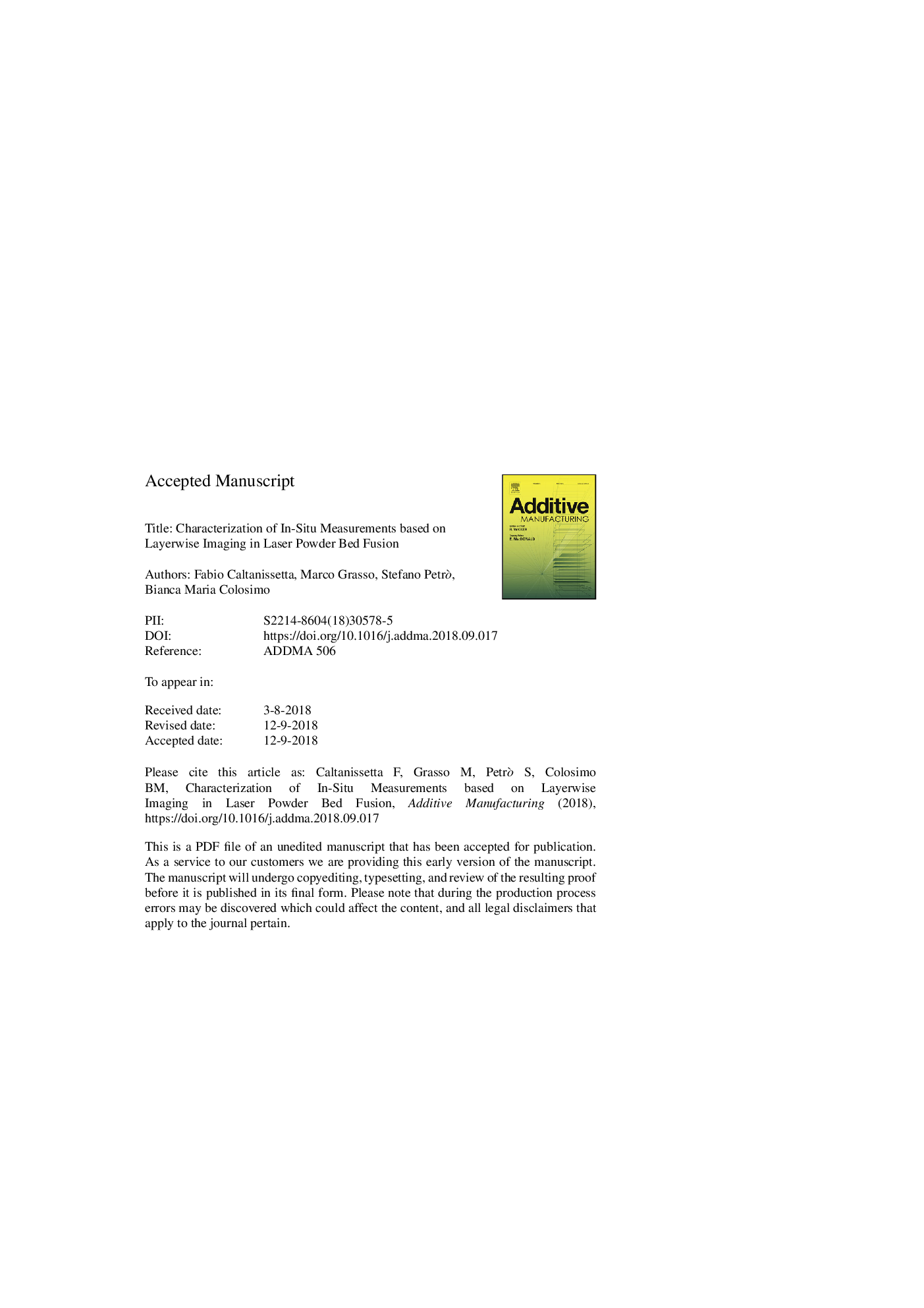| Article ID | Journal | Published Year | Pages | File Type |
|---|---|---|---|---|
| 11027741 | Additive Manufacturing | 2018 | 42 Pages |
Abstract
The layerwise production paradigm entailed in laser powder bed fusion (LPBF) offers the opportunity to acquire a wide range of information about the process stability and the part quality while the part is being manufactured. Different authors pointed out that high-resolution imaging of each printed layer combined with image segmentation methods can be used to detect powder recoating errors together with surface and geometrical defects. The paper presents the first study aimed at characterizing the accuracy of in-situ contour identification in LPBF layerwise images by means of a measurement system performance characterization. Different active contours segmentation methods are compared, and the sources of variability of the resulting measurements are investigated in terms of repeatability, part-to-part and build-to-build variability. The study also analyses and compares the sensitivity of in-situ measurements to different lighting conditions and laser scan directions. The results show that, by combining appropriate image pre-processing and segmentation algorithms with suitable lighting configurations, a high measurement repeatability can be achieved, i.e., a pure error that is up to one order of magnitude lower than the total measurement variability. This performance enables the detection of major geometric deviations and it paves the way to the design of statistical in-situ quality monitoring tools that rely on layerwise image segmentation.
Keywords
Related Topics
Physical Sciences and Engineering
Engineering
Industrial and Manufacturing Engineering
Authors
Fabio Caltanissetta, Marco Grasso, Stefano Petrò, Bianca Maria Colosimo,
